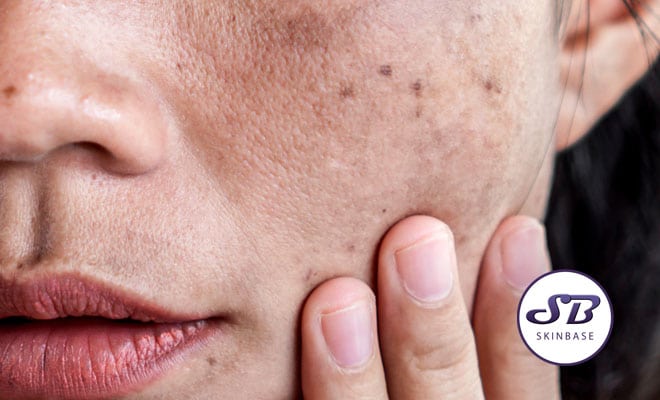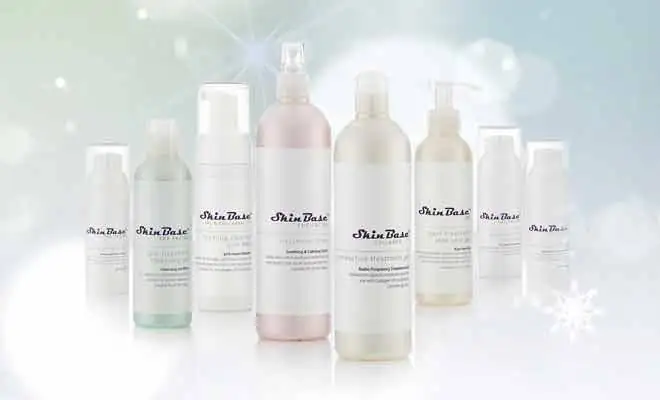Hyperpigmentation is a common, usually harmless condition in which patches of skin become darker in colour than the normal surrounding skin. This darkening occurs when excess melanin (the brown pigment that produces normal skin colour) forms deposits in the skin. It is commonly found on the cheeks, forehead, upper lip, hands, chest and shoulders. There are various causes including; sun damage caused by exposure to the sun, hormonal pigmentation caused by factors such as increased levels of progesterone during pregnancy. Pigmentation can also be triggered by medications such as the contraceptive pill, HRT and Antibiotics. Certain chemicals found in perfumes can also result in pigmentation occurring.
Which treatments are proving in-demand to effectively treat this skin concern?
Microdermabrasion
A course of SkinBase Microdermabrasion treatments can achieve beneficial results in the treatment of pigmentation, clients should be advised that a course of 10-15 treatments may be needed. Microdermabrasion will help trapped pigment move up through the epidermal layers to be shed in its normal organised way. Sucess with Microdermabrasion will depend on how deep the pigmentation is in the skin.
SkinBase IPL
Intense Pulsed Light or ‘IPL’ as it’s known, releases short pulses of filtered light. This light is readily absorbed by the high concentration of melanin found within freckles, sun spots and liver spots. The rapid absorption of light energy heats the melanin to break down this excess melanin. Following treatment, mild crusting will occur usually sloughing off within 2 weeks leaving a brighter, fresher and more even skin tone.
Chemical Peels
Chemical skin peels do exactly what the name says. They assist your body in shredding away old and unwanted skin cells, speeding up the regeneration process. The skin peel breaks bonds between old, unwanted cells, making them slough off, to allow new cells to grow in their place. With hyperpigmentation specifically, this process gets rid of the darkly pigmented cells faster. This allows the new, even-tone cells to take their place. So doing, the hyperpigmentation goes away faster.
Find your nearest SkinBase therapist
Over 2300 SkinBase therapists around the UK and Ireland
Prevention is better than cure Use an SPF
Sun exposure is the no.1 cause of pigmentation issues. Sunlight triggers the production of melanin in the skin. Melanin is our skin’s natural sunscreen protecting us from the effects of harmful UV rays, which is why we tan from exposure to the sun. But, excessive sun exposure can disrupt this process, leading to hyperpigmentation which appears in uneven patches. Sun protection is the most significant step we can take to prevent hyperpigmentation occurring in the first place. It’s also important to remember the sun’s rays affect skin even on cloudy days, so wear SPF every day.
image:istock.com/Doucefleur

